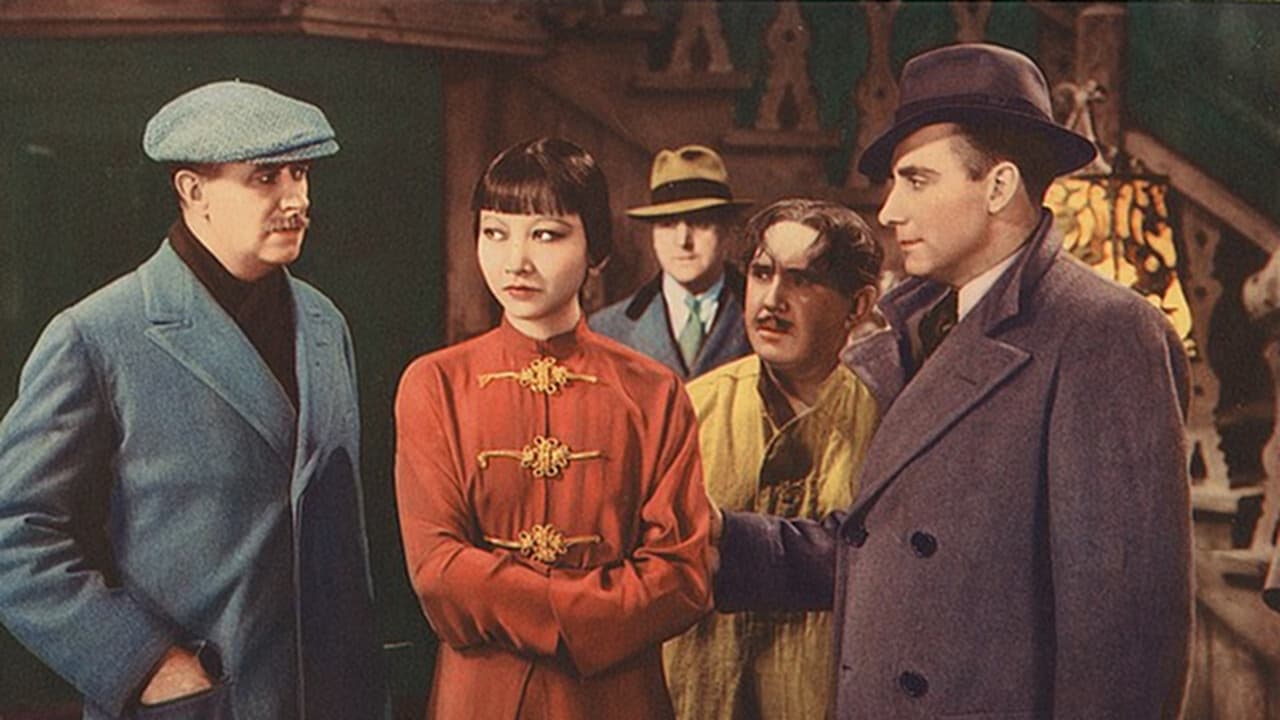

Reginald Owen graduated to the part of Holmes in A Study in Scarlet (1933). He also wrote the script (from an adaptation by Robert Florey) and was naturally anxious to fill it with plenty of roles for fellow actors. For comic relief, he repeated a device from the 1932 film. This time the besieged hotelier was played by Hobart Cavanaugh, his lone customer by Billy Bevan. In major roles, the wonderful Anna May Wong shines as Mrs Pyke, while Alan Dinehart beamed with equal assurance as a crooked lawyer. Alan Mowbray essayed a quick-witted Lestrade, while Warburton Gamble did the honors as Dr Watson. The rest of the players from Doris Lloyd's hesitating Widow Murphy to Tempe Pigott's briefly-glimpsed Mrs Hudson are equally fascinating. Edwin L. Marin has directed with a surprisingly sure hand, and by the humble standards of Poverty Row, production values are mighty impressive. (Agatha Christie enjoyed the movie so much, she even borrowed one of its major devices). (Available on a 5/10 Alpha DVD with warped but acceptable visuals, and extremely noisy sound. I recommend the 8/10 St Clair DVD instead).
... View MoreThe movie has little to do with the A. Conan Doyle story of the same name. Very cheaply made, its sets are so drab as to give the impression that the film is actually an expose of living conditions in the lower depths -- a proletarian Depression saga. The actors -- especially the three rather portly middle-aged stage actors cast as Holmes, Watson and Inspector Lestrade ("Lastrade" here) -- move gingerly around the various pieces of sad furniture, obviously fearful of breaking up the sets, one of which is supposed to be "221-A" (sic) Baker Street. (Perhaps the change in address was for legal reasons.)Again, for reasons of their own, the producers inserted a tedious scene involving some ancient English vaudevillians doing a "drunk" routine, so ancient it might have come from a medieval farce.However, the story, for what it is, does hold one's interest and moves along quickly, even though it made little sense. The pretty little ingénue playing the heroine has the disconcerting habit of displaying emotion two or three beats after the relevant action, and her neatly mustached boyfriend may have been one of the gimcrack chairs strewn around the set for all the life he shows. The gorgeous Anna May Wong apparently wandered in from another movie. She's on camera for only about 10 minutes, but her talent is so much greater than any other member of the cast that she makes every scene she graces memorable. Lord, how that lady could slink!Two possible "borrowings"-- 1. A literary device holding the story together -- a children's rhyme -- may have been borrowed by Agatha Christie for "Ten Little Indians", a book she wrote long after most prints of this movie had been converted to banjo picks. 2. A cinematic device -- a claustrophobic winding staircase -- may have been borrowed by Hitchcock for "Foreign Correspondent."
... View MoreThere were a few Sherlock Holmes - Reginald Owen wasn't the best one. "A Study in Scarlet" boasts an impressive cast - even down to Hobart Cavanaugh in an uncredited bit as Innkeeper Thompson. The plot does seem to have more in common with Agatha Christie's book "And Then There Were None" but that wasn't published until 1939. Even though it was filmed at the California Tiffany studios it certainly had an authentic English feel to it. The amazing thing is how the cast (most of them American actors) came up with very creditable English accents. You didn't even get that in A productions let alone the cheaper films.Reginald Owen had played Dr. Watson to Clive Brooks' Sherlock Holmes in the 1932 film of that name but in this film he played Sherlock Holmes. A body is discovered in a railway carriage pulling into Victoria Station. A code containing the words scarlet and Limehouse is printed in the paper. He is the second member of a secret society (of which Alan Dinehart is the head) to die. They divide up the money but decide not to give any to the victim's widow, Mrs Murphy (Doris Lloyd). She then goes to Sherlock Holmes with a rhyme she found among her husband's things. After the meeting another member is shot through the heart. Sherlock Holmes talks to the widow Mrs. Pike. Played by Anna May Wong with a very creditable English accent. Even though she is given top billing she is not given much to do - she does look very exotic though. The members are killed off one by one - each one receiving a little poem before hand. It is clear that Thaddeus Merrydew is the master mind behind all the murders but the actual murderer was a surprise.June Clyde plays the heroine Eileen Forrester. She made a little splash in early musicals ie "The Cuckoos" (1930), "Hit the Deck" (1930) then in 1932 she was named a Wampus Baby Star. That kept her career going until the end of the 30s. Allan Dinehart, that oily villain of so many 30s movies plays Thaddeus Merrydew. Billy Bevan, an old silent comic, has a part as a helpful patron at the inn.Recommended.
... View MoreNot as good as the ones with Basil Rathbone or Jeremy Brett... Fascinating to see a film from 1933. Study the clothes and furnitures for example. Basil Rathbone, I miss you!
... View More